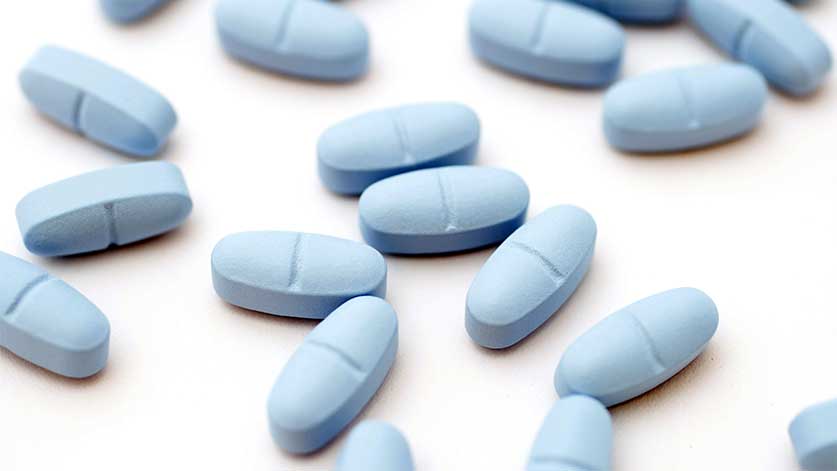What Does Halcion (Triazolam) Look Like?

Halcion is the brand name for the central nervous system depressant and benzodiazepine triazolam. It’s used for the short-term treatment of sleep disorders like insomnia.
What Does Halcion Look Like?
The good thing about Halcion is that it doesn’t come in that many variations. It likely only comes in two colors and there are only two strengths. The imprint on each pill is mainly where each tablet differs.
0.125 mg Tablet
Halcion is available as 0.125 mg tablets. They are white in color, oval in shape, and have “HALCION 0.125” imprinted on each tablet.
0.25 mg Tablet
Halcion also comes as a 0.25 mg tablet. It’s blue or powder blue in color and oval in shape. There are a number of imprints you may see on these pills. The imprint often differs depending on the manufacturer of the medication.

The imprints you might see include:
- 54 620
- G 3718
- HALCION 0.25

How Does Halcion Work?
Triazolam works as a sedative-hypnotic by increasing the amount of the neurotransmitter gamma-aminobutyric acid (GABA) in the brain. This leads to a decrease in brain activity, making it more conducive to sleep.
While Halcion is classified by the Food and Drug Administration (FDA) and the Drug Enforcement Administration (DEA) as a controlled substance with a low potential for abuse, triazolam abuse can still lead to physical dependence and addiction.
No matter if you’re taking the medication with a prescription or abusing it, it’s important to know what the prescription drug looks like. Many medications have counterfeit versions that can lead to dangerous consequences, and it’s important to know what the legitimate tablet looks like.
Halcion Side Effects
No matter the strength or color of the Halcion tablet you take, the drug has side effects. The higher dose you take or the more abuse the drug, the more intense the side effects can be.
Some of the most common side effects of triazolam include:
- drowsiness
- dizziness
- lightheadedness
- headache
- sleepiness
- problems with coordination
- nervousness
- tingling of the skin
- nausea
- vomiting
Serious Side Effects
While rare, there are some serious side effects of Halcion as well, including:
- rash
- hives
- itching
- swelling of the eyes, face, lips, tongue, or throat
- short-term memory loss
- feeling that the throat is closing
- difficulty breathing or swallowing
- hoarseness
Halcion Drug Interactions
When taking Halcion, you should also know that there are drugs that shouldn’t be mixed with it.
If the following drugs are combined with Halcion, it can lead to adverse reactions:
- antifungal medications like itraconazole and ketoconazole
- certain medications for human immunodeficiency virus (HIV) or acquired immunodeficiency syndrome (AIDS) including lopinavir and ritonavir
- grapefruit juice
- nutritional supplements
- certain antibiotics like clarithromycin and erythromycin
- antidepressants
- antihistamines
- certain calcium channel blockers such as diltiazem and nicardipine
- hormonal contraceptives
- medications for anxiety, colds or allergies, mental health disorders, or seizures
- other benzodiazepines like diazepam, alprazolam, and lorazepam
- muscle relaxants
- sedatives
- certain selective serotonin reuptake inhibitors (SSRIs)
- opioids
- other sleeping pills
- tranquilizers
Contraindications
There are also a few medical conditions that Halcion can actually make worse. If you have any of the following health issues, make sure to let your healthcare provider know before they prescribe Halcion:
- suicidal thoughts
- breathing problems
- sleep apnea
- seizures
- kidney disease
- liver disease
Additionally, you’ll want to let your doctor know if you’re pregnant, planning to become pregnant, or breastfeeding. Halcion may harm the fetus and it could transfer from the breast milk to the baby.
Halcion Overdose
When talking about what Halcion looks like and what strengths it comes in, it’s important to discuss overdoses as well. When you take too much Halcion for your body to process, an overdose occurs that can be life-threatening if left untreated.
Symptoms of a Halcion overdose can include:
- extreme drowsiness
- confusion
- problems with coordination
- slurred speech
- trouble breathing/respiratory depression
- seizures
- coma
Withdrawal Symptoms
If you take Halcion in high doses or abuse the drug over a long period of time, you’re likely to build up a physical dependence. This means that if you try to stop taking the drug, uncomfortable withdrawal symptoms are likely to occur.
Withdrawal symptoms of Halcion can include:
- sweating
- increased heart rate
- fever
- muscle cramps
- uncontrollable shaking
- rebound insomnia
- nausea and vomiting
- depression
- hallucinations
- anxiety
- seizures
- headaches
Because withdrawal symptoms can be so unpleasant, a detox program with a healthcare professional is recommended.
Get Treatment In Ohio Today
If you or a loved one are struggling with prescription drug abuse, you don’t have to go through it alone. Our experienced staff at Ohio Recovery Center can help you through your recovery journey.
We offer a variety of addiction treatment options, including detox, inpatient drug rehab, and aftercare. Contact us today to learn more.

